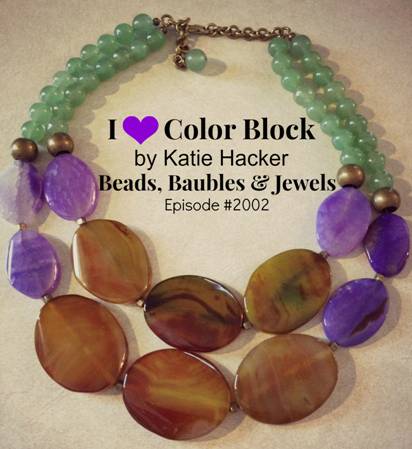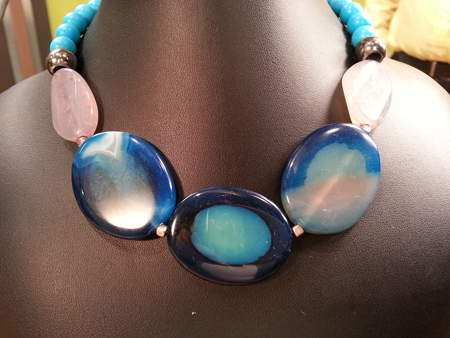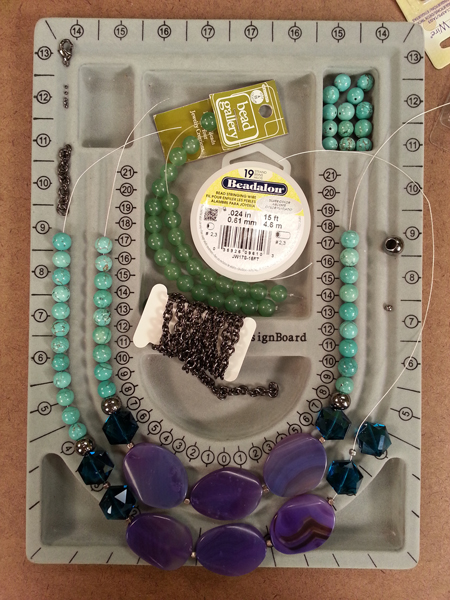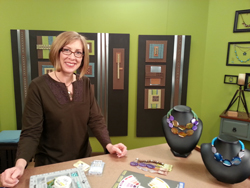


Color blocking is a timeless technique that makes great statement jewelry. Try these tips to turn three strands of beads (with a few little accents) into eye-catching double-strand necklaces!
Materials:
6 purple quartz dyed 30mm bead gallery® ovals
5 amber dyed quartz 40mm bead gallery® ovals
35 green aventurine bead gallery® 10mm rounds
4 large-hole antique brass bead gallery® rounds
18 antique brass bead gallery® 4mm rounded cubes
4 antique brass bead gallery® 4mm rounds with seams (to be used as crimp covers)
.024” satin gold Beadalon® 19
4 Beadalon crimp beads
Beadalon antique brass chain
Beadalon antique brass lobster clasp
Beadalon antique brass head pin
Tools:
round-nose pliers
chain-nose pliers
wire cutters
crimping tool
mighty crimping tool and beading awl (for crimp covers)
Instructions
- Cut a 18” and a 20” length of beading wire and a 1” and 3” length of chain.
- Use a crimp bead to attach the 18” wire to the 1” chain.
- Use a beading awl to open a seamed bead and use it as a crimp cover.
- Pass the wire through eight aventurine beads.
- Pass the wire through two small cube beads and slip a large-hole metal bead over them (this helps protect the wire).
- Pass the wire through a purple oval, then through a cube, three amber ovals with cubes between and through another purple oval.
- Pass through two cubes inside a large-hole bead, then add eight aventurine beads and use a crimp bead/cover to attach the wire to the 3” chain.
- Use a crimp bead to attach the 20” wire to the 1” chain.
- Repeat the beading pattern from the previous strand, substituting nine aventurine beads and two purple ovals on each side with three amber ovals in the center of the strand.
- Use a crimp bead/cover to connect the end of the wire to the 3” chain.
- Attach the clasp to the 1” chain.
- Pass a head pin through an aventurine bead and make a wrapped loop to connect it to the end of the 3” chain.
Tips:
Always use the largest stringing material that will fit through the smallest bead holes. Since this necklace uses some very large, heavy beads, this is particularly important to prevent breakage.
Odd numbers are more interesting to the eye than even numbers. This is especially true in color blocking. The upper strand has 3 main beads, with a bead on each side for a total of 5. The longer strand repeats the 3 main beads, with two beads on each side for a total of 7.
Small metal beads between the large stones help the necklace drape properly and decrease the possibility of abrasion on the wire.
Large metallic beads on either side of the focal section punctuate the design and add a little bit of flair.
For more information visit www.katiehacker.com
|




